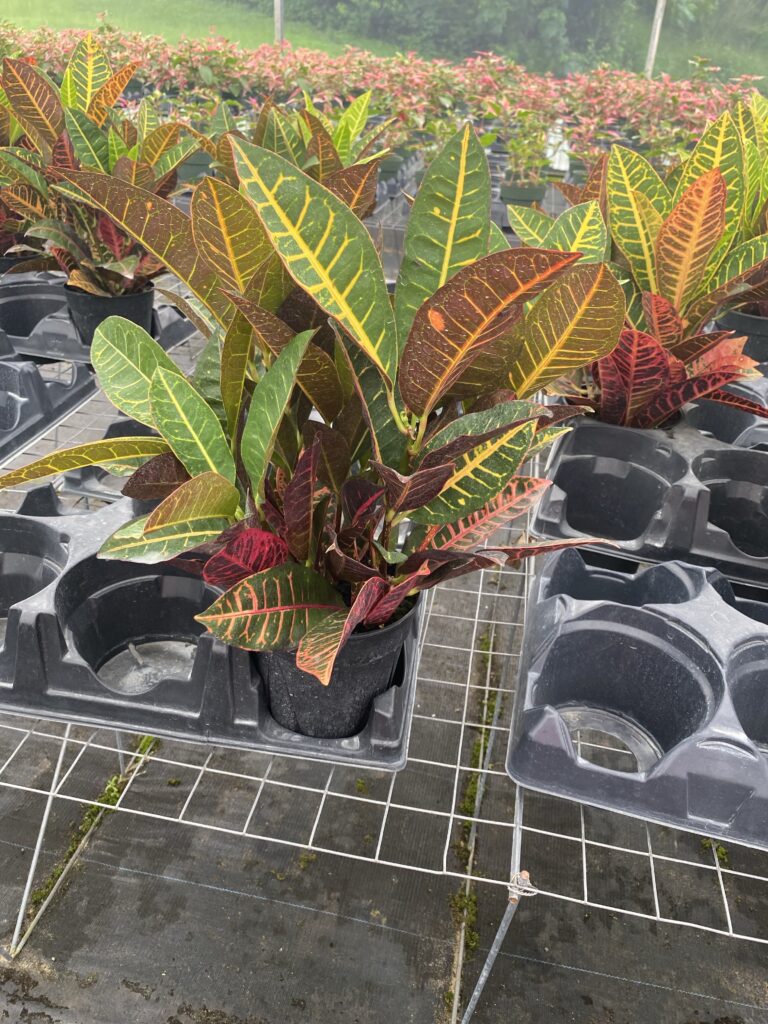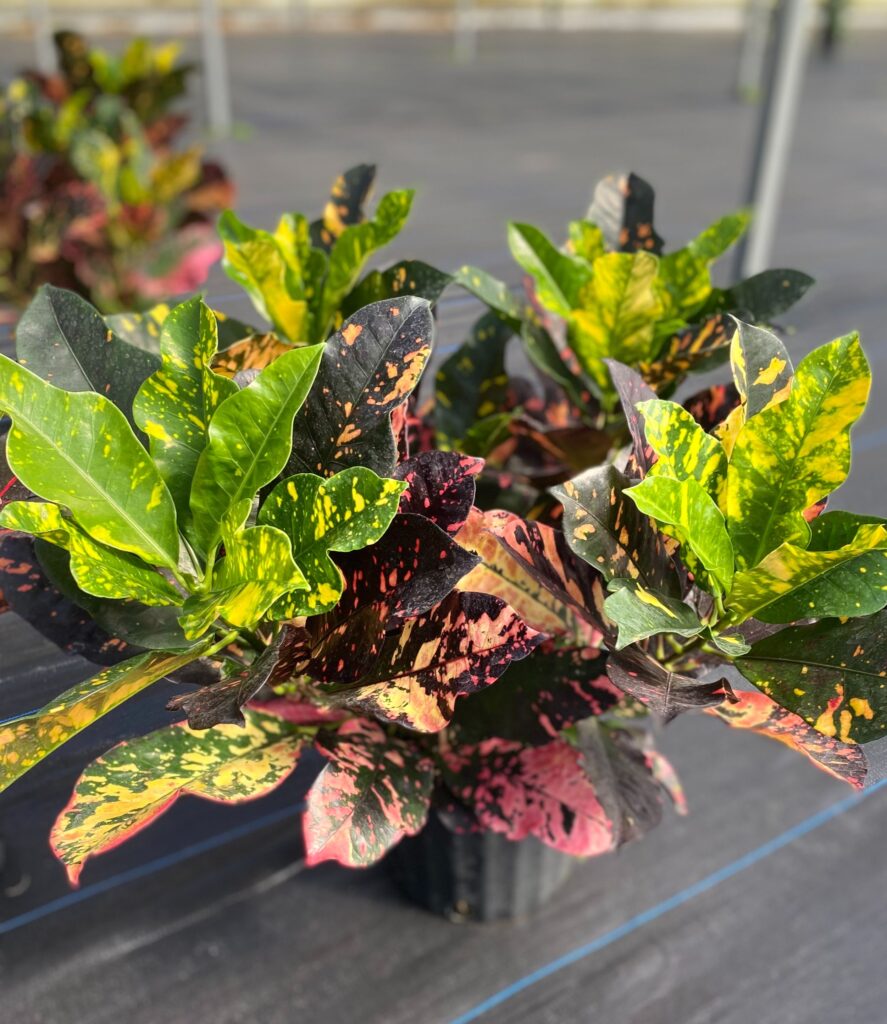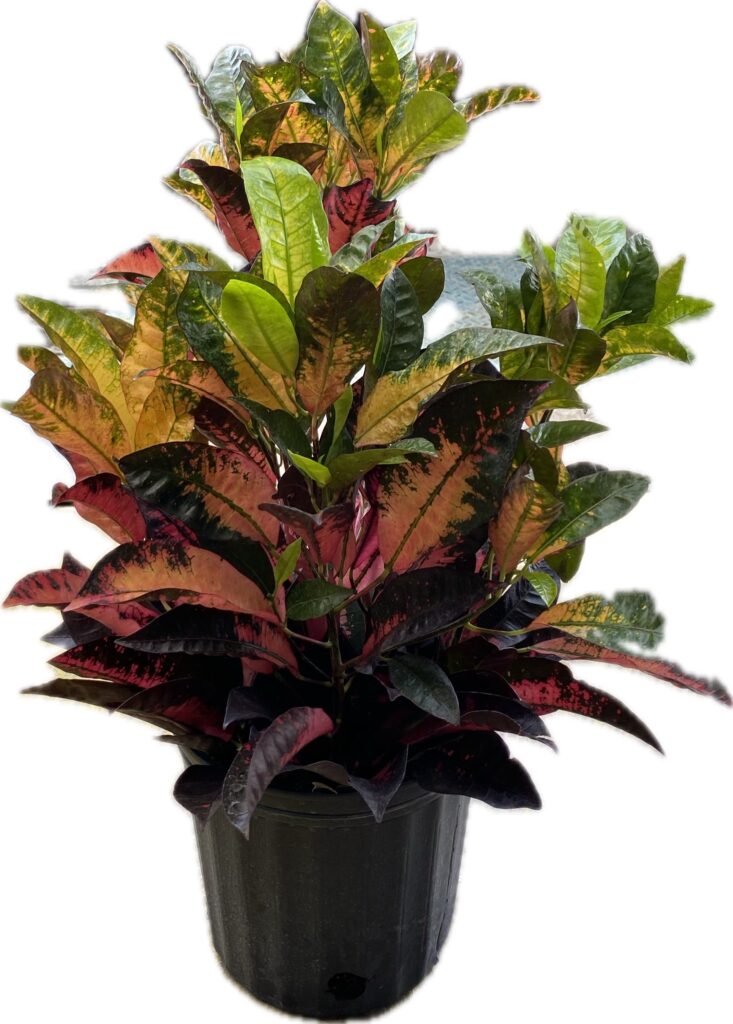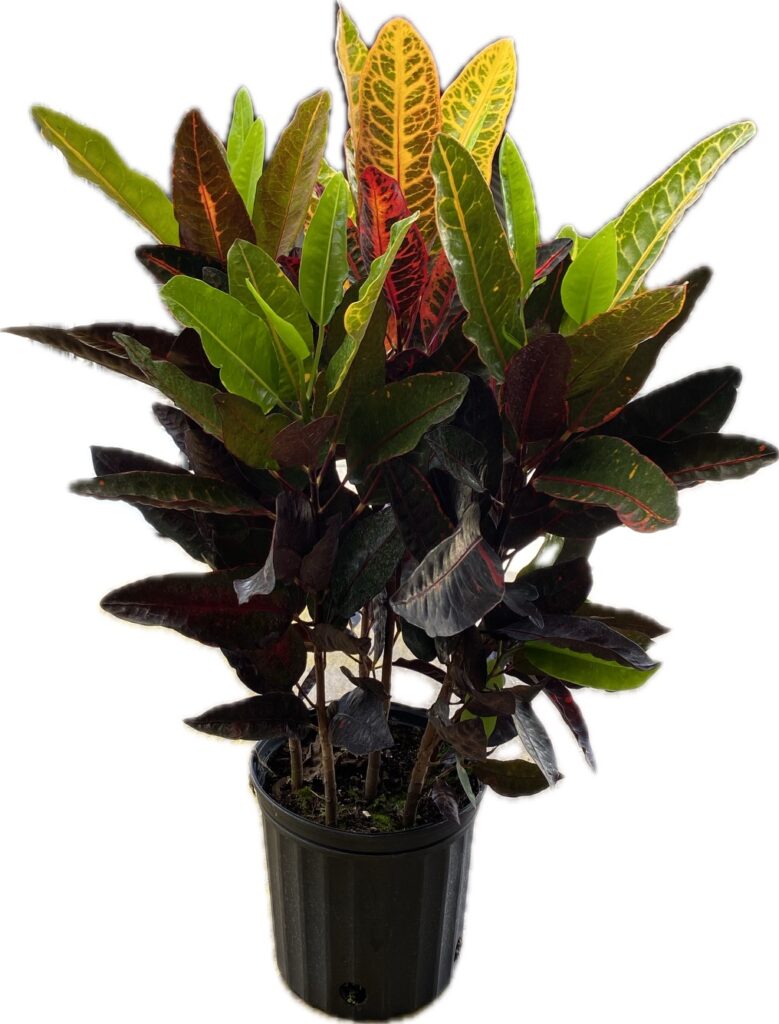Croton plants, or Codiaeum variegatum, are renowned for their vibrant and colorful foliage, making them a striking addition to indoor and outdoor gardens. They come in a variety of colors and leaf shapes, adding a bold splash of color to any space.
We carry a variety of Croton plants in 4″, 6″, 8″, and 10″ sizes.
Here’s a comprehensive guide to caring for Croton plants.
Appearance
Growth: They are bushy plants that can reach 3-6 feet tall indoors. They tend to grow upright with a dense, leafy canopy.
Leaves: Crotons are celebrated for their showy, colorful leaves, which can feature combinations of red, yellow, orange, green, and purple. The leaves vary in shape, ranging from elongated and narrow to broad and lobed, depending on the variety.
Care Tips
Light: Crotons thrive in bright, indirect light. They can tolerate some direct sunlight but prefer filtered light. Inadequate light can result in less vibrant foliage and slower growth. A sunny spot near a window is ideal.
Watering: Keep the soil evenly moist but not soggy. Water when the top 1-2 inches of soil feel dry. Overwatering can lead to root rot, so ensure the pot has good drainage. During winter, reduce watering as the plant’s growth slows.
Soil: Use a well-draining potting mix. A standard houseplant mix or a blend with added perlite or sand for improved drainage works well.
Temperature: Crotons prefer temperatures between 60-85°F. They are sensitive to cold and should be kept away from drafts and temperatures below 50°F.
Humidity: They enjoy higher humidity levels. To increase humidity, you can mist the leaves regularly, use a humidity tray, or place a humidifier nearby. In dry indoor environments, especially during winter, maintaining higher humidity is important.
Fertilizing: Feed with a balanced, water-soluble fertilizer every 4-6 weeks during the growing season (spring and summer). Reduce feeding in fall and winter.
Repotting: Repot every 1-2 years or when the plant becomes root-bound. Spring is the best time for repotting. Choose a pot that is slightly larger than the current one to accommodate growth.
Pruning: Prune to remove any dead or damaged leaves and to shape the plant. Regular pruning can also help promote bushier growth.
Pests and Problems: Crotons can be susceptible to pests like spider mites, mealybugs, and scale. Check regularly for signs of pests and treat as needed. Leaf drop and yellowing can indicate issues such as overwatering, under-watering, or low humidity.
Additional Tips
Leaf Drop: Crotons may drop leaves if they are exposed to sudden changes in temperature, drafts, or improper watering. Maintaining consistent care can help prevent this issue.
Toxicity: Crotons are mildly toxic if ingested, causing gastrointestinal upset. Keep the plant out of reach of pets and small children.
If you have any questions, or are interested in purchasing, feel free to come by the nursery or give us a call at (352)735-8350. Our inventory is also available to see online.




